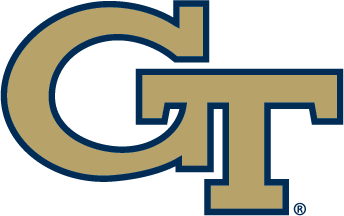Oct. 10, 2007
By JACK WILKINSON
RamblinWreck.com Correspondent
Pick an adjective. Any adjective: Venerable. Rundown. Historic. Dilapidated. Unique. Untidy. As in, a most untidy bowl.
Whatever word works for you — even if the toilets nearest your seat do not — one word best describes the Orange Bowl: Legendary. At least for another month, before the old downtown Miami dowager slips into legend and football lore forever.
Yet not before three last college football games are staged in the 70-year-old landmark. The first? Saturday’s noon kickoff between Georgia Tech and Miami on ESPN.
“I was happy just to go down there,” Jake Blackwood, Tech’s backup sophomore safety and special teams player, said of the Jackets’ 2005 trip to Miami. Blackwood didn’t play in that scintillating 14-10 upset of third-ranked Miami; he made the travel team as the scout team player of the week that month, but merely warmed up on the field. “But to be able to go down there and play [this Saturday], I’m very grateful.
“It’s going to be a big day for me,” he said, “no matter what happens.”
Blackwood grew up in West Palm Beach, Fla., less than an hour north of Miami. His father, Glenn played for the Miami Dolphins from 1979-87, when the Dolphins still played in the Orange Bowl. An uncle, Lyle, played for four NFL teams from 1973-86, the last six seasons for the Dolphins in the Orange Bowl.
“My Dad used to tell me how great the Orange Bowl was,” said Blackwood. “He was a student of the game. He always talked about the turf, that it was one of the best fields they ever played on.
“My mom had to sit in the stands,” Blackwood said, grinning. “She used to tell me how bad the facilities were.”
Particularly in the ’86 Dolphins season, when Beth Blackwood was in a most expectant, motherly way. “The stands weren’t exactly the most comfortable, and she was pregnant with me at the time,” said Blackwood, who was born Feb. 20, 1987. “That wasn’t the greatest. It’s hot. It’s not a great place for the sports watcher, but it’s still a great place.”
Even Beth Blackwood believes so, after all these years and all those times she had to ice her swollen feet while sitting in the stands during her pregnancy. “She thinks it’s a shame it’s not going to be used anymore,” Jake said.
So much football history has unfolded in the Orange Bowl since the stadium opened on Dec. 10, 1937. Five Super Bowls were played there, including Joe Namath guaranteeing victory for the New York Jets over Baltimore in Super Bowl III. A year after that 16-7 upset, the NFL and AFL merged.
The 1972 Dolphins were a perfect 17-0 enroute to beating Washington in the Super Bowl. They played in the open-ended Orange Bowl, where Flipper — the team’s live dolphin mascot — swam and surfaced and flipped in a pool behind one end zone.
But it’s college football that’s produced most of the Orange Bowl’s memorable moments and given it a special place in the sport’s annals. The 1984 Orange Bowl game bestowed on Miami its first national championship with a 31-30 upset of No. 1 Nebraska. Husker coach Tom Osborne eschewed a final-minutes, game-tying PAT that would’ve given the top-ranked Huskers the title.
Miami would win a couple more national championships in Orange Bowl games. FSU’s Bobby Bowden finally won the first of his two titles in 1993 in an Orange Bowl. Eleven months after Miami upset Nebraska, Doug Flutie’s last-play Hail Mary not only enabled Boston College to stunn Miami but clinched the Heisman Trophy for Flutie.
Yet it was also Miami’s decade of dominance from 1985-94 that helped give the Orange Bowl stadium its stature as one of college football’s singular destinations. The Hurricanes won an NCAA-record 58 consecutive home games from ’85-94; the Canes were as intimidating as their stadium and the surrounding neighborhood.
“My Dad told me that when people would go to Dolphins games, they’d park their cars in the front yards of houses,” Blackwood said. “Whether good, bad or indifferent, that was all part of the Orange Bowl.
“When you drive up, you see the Orange Bowl [stadium and sign], which is cool,” Blackwood said. “You see all the fans around it. It’s weird-looking from the outside. You get inside and the locker oom is a little bit, well, not the greatest in the world. Then you walk out and — I’ve seen game tapes from my Mom — you see the open end zone with the palm trees. It’s very recognizable.
“You walk into every stadium and think about what’s gone on there,” Blackwood said. “But especially this one — it’s so old, so many memorable games were played there, both the Dolphins and Miami. There’s history everywhere.”
“Everybody knows about the Orange Bowl,” said Jamal Lewis, Tech’s All-ACC senior safety from Riverdale. “It’s just a historical place. You look at it, you’re kind of in awe.”
Yet in 2005, Lewis learned this: “Miami gets pretty loud when you’re losing. When you’re beating ’em, they really don’t say too much.”
It was loud way back in the 1940’s and ’50s, when Georgia Tech first in the Orange Bowl. The Jackets played in five Orange Bowls, going 2-2 in actual Orange Bowl games in the Orange Bowl itself. Bobby Dodd’s teams won in 1948, beating Kansas 20-14; and in the memorable Jan. 1, 1952 game.
That afternoon, Pepper Rodgers kicked a 6-yard field goal in the final minute to beat Baylor 17-14 and enable Tech’s SEC champions to finish 11-0-1. The following season, Dodd’s greatest team went 12-0 to extend Tech’s unbeaten streak to 26 games and win the Institute’s third national championship.
In the 1967 Orange Bowl, Dodd’s last game as Tech’s head coach ended in defeat. Despite Kim King at quarterback and Lenny Snow at running back, the Jackets fell 27-12 to Florida. That was Tech’s last flirtation with Orange Bowl fame until two years ago, when Jon Tenuta’s blitzing defense stifled Miami and Tashard Choice made his first start at tailback a gem: 84 yards rushing against the nation’s No. 1 defense against the run, a 2-yard plunge for the Jackets’ first touchdown, then a key block on Reggie Ball’s game-winning, 16-yard scoring run.
I was there that memorable night in the Orange Bowl pressbox, which is as outdated as the rest of the joint. Yet the old bowl was also where I covered my first college football game, Miami’s season-opening upset of mighty Texas in 1973. And, my oddest college football game.
In 1974, Darrell Mudra, the new head coach at Florida State, inherited an 11-game losing streak from the ’73 season. Mudra lost his first eight games at FSU while coaching, as he did at Eastern Illinois with much success, from a peculiar perch: the pressbox. He looked down from on high, communicating by phone with his assistants on the sidelines while they ran the Seminoles’ show.
Finally, on the night of Nov. 8, 1974, while watching from his Orange Bowl aerie, Mudra saw the ‘Noles’ 18-game losing steak evaporate with a 21-14 win over meek Miami. It was FSU’s only victory that fall. After going 3-8 in ’74, including a 30-0 trouncing by Tech at Grant Field, Mudra was fired and FSU hired somebody named Bowden. He added much to the Orange Bowl’s considerable lore.
Now, the end is near. After Saturday’s game, Miami has two remaining home games: Nov. 3 against N.C. State, then the Nov. 10 Orange Bowl farewell versus Virginia.
“It’s sad,” said quarterback Taylor Bennett, who feels “very fortunate” to be able to play in the Orange Bowl before its demise. He appreciates the Orange Bowl’s history — “In terms of old stadiums, it’s probably number one in terms of history, except for Notre Dame” — if not its amenities.
“It’s a small locker room, and it’s old,” Bennett said. “The stadium looks like it’s going to fall down when you pull up to it in the bus.”
But it hasn’t, and it most likely won’t. Eventually, the wrecking ball will come and the Orange Bowl will be gone. Never forgotten, though.
“The Orange Bowl will always be that place that has that history,” Bennett said. “…We’re talking everybody’s played there: Super Bowls, Orange Bowls, 17 Heisman Trophy winners played there.”
Even Chan Gailey got on the field, if not in the game. Ask Gailey about his memories of the Orange Bowl, and the Georgia Tech coach replies, “Huh.” Pause. Then: “I was there, I think it was in ’71, with Florida, the lay-down play. We let Miami score so we could get the ball back and John Reaves could break the [NCAA] record [for career passing yardage].”
The infamous Gator Flop, when Florida’s defense disdained a late goal-line stand and intentionally fell down so Miami could score quickly, Florida regained possession and Reaves passed his way into history.
“Most of us ran down, jumped in the pool in the stadium and kinda rubbed it in,” said Gailey, then a sophomore backup QB for the Gators. He called it, “A highlight, and lowlight, of my life.”
Gailey also quickly pointed out, “I was not in the jump-in-the-pool party.”
Still, “It’s a very unique place, to say the least,” allowed Gailey, who never coached in a Super Bowl in the Orange Bowl. “I think the fact that it’s probably the same as it was when I was there in ’71 says a lot about that place.
“There are so many memories that come out of that stadium for somebody who follows college football and, to some extent, pro football.”
Gailey cited the many memorable Orange Bowls. A litany of high-stakes Miami-Florida State games, many decided on last-second, often-missed FSU field goals. “There’s a lot of history for a college football buff,” the coach said. If not a lot of warm and fuzzy memories.
Is he sad the old relic is closing after this season? “No,” Gailey quickly replied. “I think it’s good when you can play in a more updated facility.”
Updated, of course, isn’t venerable. Dilapidated. Historic. And certainly not legendary.









